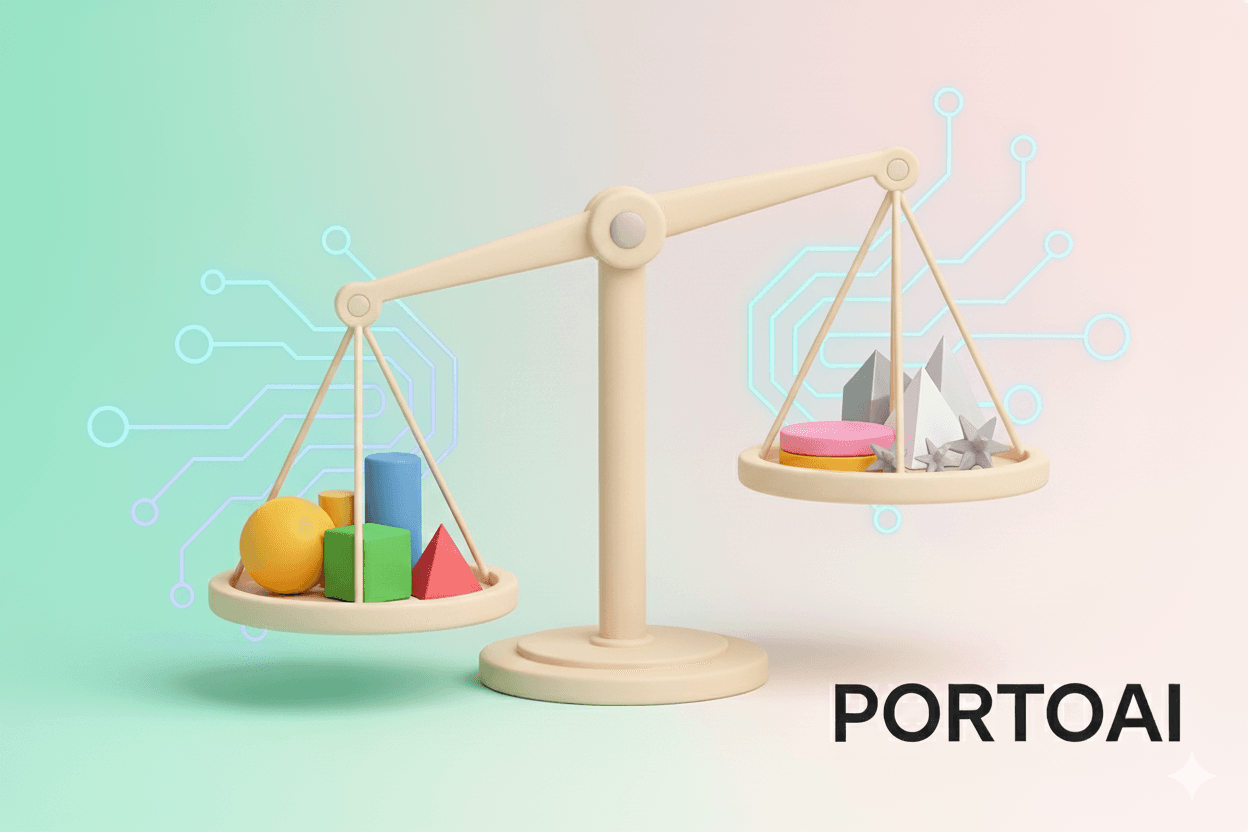Understanding Capital Market Instruments: Shares & Debt Explained

Venkateshwar Jambula
Lead Market Researcher
4 min read
•Published on September 8, 2024
•Navigating Capital Market Instruments: A Definitive Guide
The capital market is the bedrock of financial ecosystems, facilitating the crucial flow of funds between entities seeking capital and those with capital to invest. It's a dynamic arena where long-term financial assets are created and traded. Understanding the instruments traded within this market is fundamental for any sophisticated investor aiming to build a robust portfolio.
At PortoAI, we empower investors to dissect these markets with precision. Our platform provides the data synthesis and analytical tools necessary to make informed decisions about where to allocate capital.
The Two Pillars: Primary and Secondary Markets
Before diving into instruments, it's essential to grasp the market structure:
- Primary Market: This is where new securities are issued for the first time. Companies raise capital by selling stocks (IPOs) or bonds directly to investors.
- Secondary Market: This is where existing securities are traded among investors. It provides liquidity and price discovery for assets initially issued in the primary market.
Capital market instruments are the tangible assets exchanged in these markets, representing ownership or a creditor relationship.
Core Capital Market Instruments: Equities and Debt
While a vast array of financial products exist, two primary categories dominate capital market trading:
1. Shares (Equities)
Shares, also known as stocks or equities, represent ownership in a corporation. When you purchase shares, you become a part-owner of the company, entitled to a portion of its assets and earnings.
- Ownership Stake: Equity holders possess residual claims on the company's assets and earnings after all liabilities have been met.
- Investor Rights: Depending on the share class, investors may hold voting rights on corporate matters, influencing the company's direction.
- Returns: Returns are typically generated through two avenues:
- Capital Appreciation: The increase in the share price due to company growth, market demand, or positive economic factors.
- Dividends: A portion of the company's profits distributed to shareholders, often paid quarterly.
- Risk Profile: Equities generally offer the potential for higher returns but also carry higher risk compared to debt instruments. Their value is intrinsically linked to the company's performance and broader market sentiment.
Investors can acquire shares through initial public offerings (IPOs) in the primary market or by trading existing shares on exchanges in the secondary market. PortoAI's Market Lens helps identify compelling equity opportunities by analyzing company fundamentals and market trends.
2. Debt Instruments
Debt instruments are essentially loans made by investors to an entity (corporation or government). In return for lending capital, the issuer promises to repay the principal amount on a specified maturity date and typically makes periodic interest payments.
- Creditor Relationship: Holders of debt instruments are creditors, not owners. They do not have ownership rights in the issuing entity.
- Fixed Tenure: Debt contracts have a defined maturity period, ranging from short-term (though typically less than a year for money markets) to long-term (e.g., 3 to 30+ years).
- Interest Payments: These are usually fixed and paid at regular intervals (e.g., annually, semi-annually). The interest rate is determined at issuance.
- Principal Repayment: The original amount borrowed is repaid to the investor upon maturity.
Common Issuers and Debt Instruments:
| Issuing Body | Name of the Debt Instrument | Characteristics |
|---|---|---|
| Corporations/Companies | Corporate Bonds & Debentures | Issued by companies to fund operations, expansion, or acquisitions. Debentures are unsecured, while bonds may be secured by specific assets. |
| State & Local Governments | Municipal Bonds | Issued by cities, counties, or states to finance public projects like infrastructure. Often offer tax advantages. |
| Central Government | Government Bonds (e.g., Treasury Bonds) | Issued by national governments to finance public debt. Considered among the safest investments due to sovereign backing. |
Debt instruments are generally considered less risky than equities due to their fixed income stream and priority claim on assets in case of liquidation. However, they are still subject to interest rate risk and credit risk. PortoAI's risk console helps users quantify and manage the risks associated with various debt and equity instruments in their portfolios.
Conclusion: Informed Investment Through Understanding
Mastering the nuances of capital market instruments—shares and debt—is crucial for building a diversified and resilient investment strategy. Each instrument serves a distinct purpose and carries its own risk-reward profile.
By leveraging advanced AI-powered research tools like PortoAI, investors can gain a deeper understanding of these instruments, identify optimal entry and exit points, and manage portfolio risk with greater confidence, ultimately driving towards long-term financial objectives.
Blog
Investment Insights and Tips
Explore our latest investment strategies and insights.

Stocks
Master Investment Psychology: Control Emotions for Smarter Stock Decisions
The Psychology of Stock Investment: Understanding Emotions That Affect Investment Decisions A stock market is a funny place – both the seller and buye...
Venkateshwar Jambula
November 7, 2024
•4 min read

Stocks
Power Grid India Stock: Analyzing PGCIL's Price Movements & Future
The Rise and Fall: Unraveling the Power Grid Corporation of India Stock Price The Power Grid Corporation of India Stock Price (PGCIL) has experienced ...
Venkateshwar Jambula
November 6, 2024
•10 min read

Stocks
Are Multibagger Stocks Still Possible in 2025? Your AI Guide
These 6 Multibagger Stocks Exploded in 2025 — Is Your Portfolio Still in 2022? Till June 2025, the benchmark Sensex has risen by around 4%, reflecting...
Venkateshwar Jambula
November 5, 2024
•11 min read

Stocks
Top 5 Indian Growth Stocks & Sectors for 2025: AI-Driven Insights
Top 5 Best Growth Stocks in India & Sectors to Watch in 2025 You see the market correction in late 2024 and early 2025 was driven by weak economic...
Venkateshwar Jambula
November 4, 2024
•9 min read